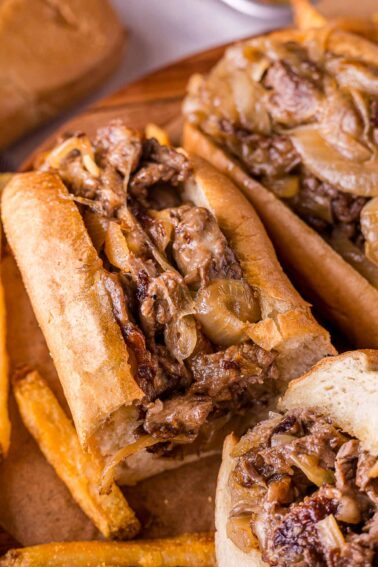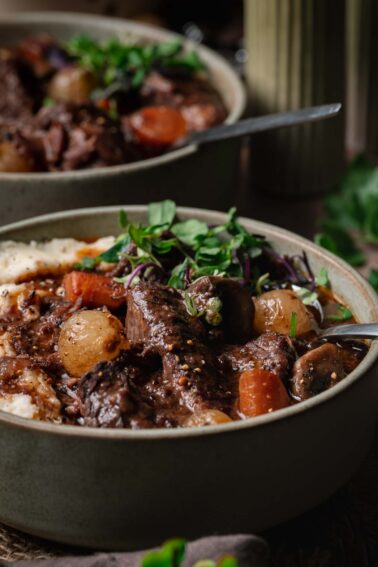Ever wonder what those gorgeous streaks of white running through your favorite steak are? That’s marbling, and it’s not just there for show! It’s the secret gem that takes a good steak to an epic level of flavor and texture. We’re explaining what marbling is, why it matters, and how to use it to your advantage for your favorite beef recipes.
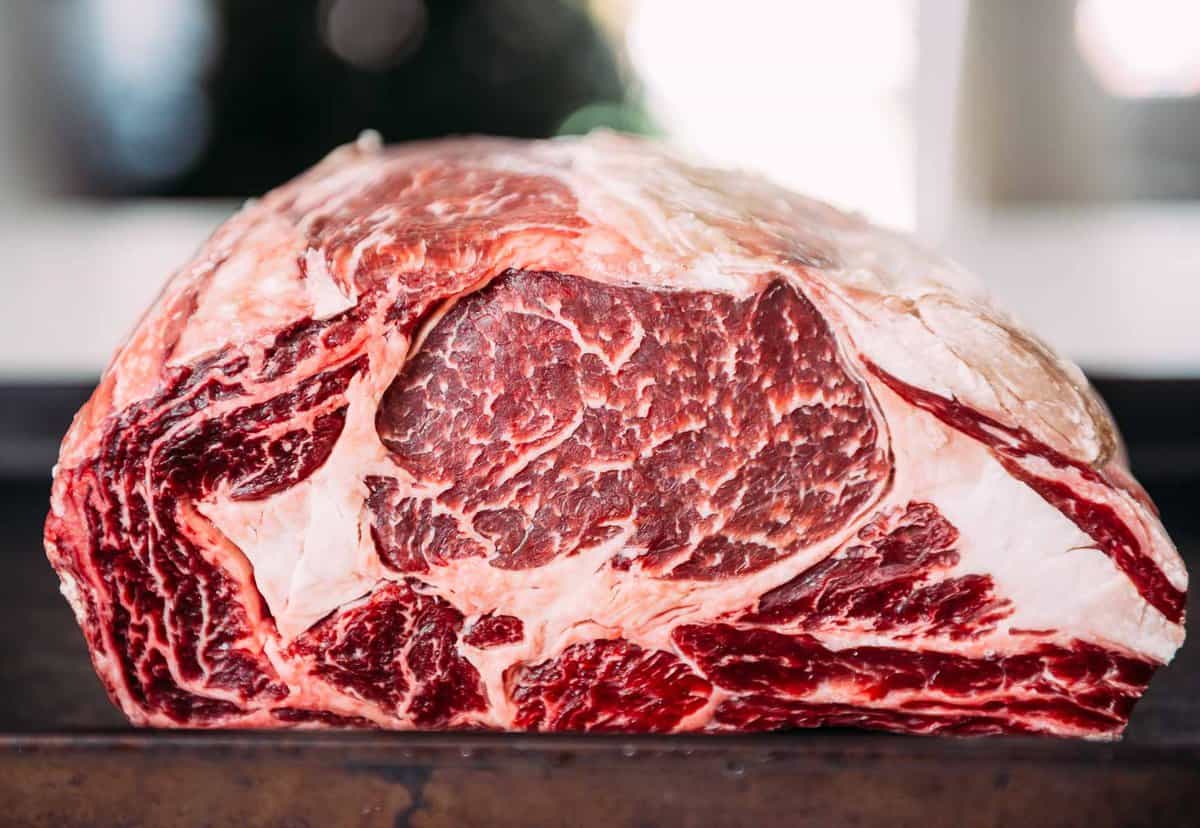
Table of Contents
What Is Marbling?
Marbling is those thin white streaks of intramuscular fat running through the muscle itself. And it’s key to flavor, tenderness, and juiciness in beef.
Fine flecks of fat are speckled between the muscle fibers. More white flecks of fat mean a higher marble score. This score, like a report card for steaks, is a big deal – it affects how much the meat costs and how delicious it will be.
Understanding marbling can be great when buying meat; it’s a visual guide that helps you select the perfect cut of beef for any dish.
Why is marbling such a big deal?
- Flavor Enhancing: Marbling adds flavor as it melts, infusing the meat and creating deliciousness. Think of a juicy, cheesy bite compared to a plain cracker! Lean cuts can taste bland in comparison.
- Juicy Goodness: Those marbled fat pockets act like tiny water balloons, keeping your steak juicy throughout cooking. No dry bites here! Lean cuts, without this built-in irrigation, can dry out more easily.
- Melts in Your Mouth: Marbling tenderizes the meat as it cooks, making the steak incredibly soft and luxurious. This “marbling effect” creates that melt-in-your-mouth feeling steak lovers crave. Lean cuts might require different cooking methods to achieve the same tenderness.
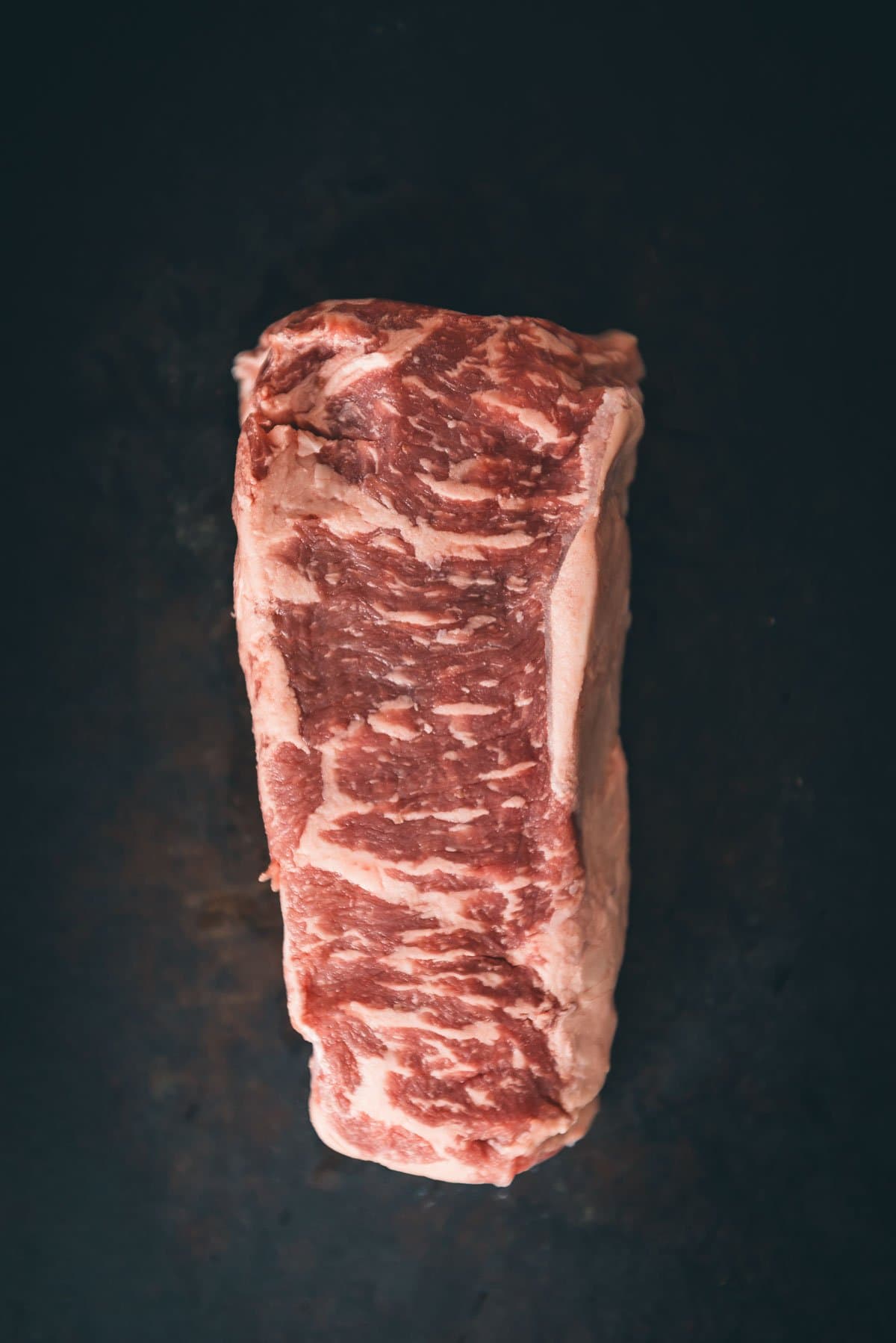
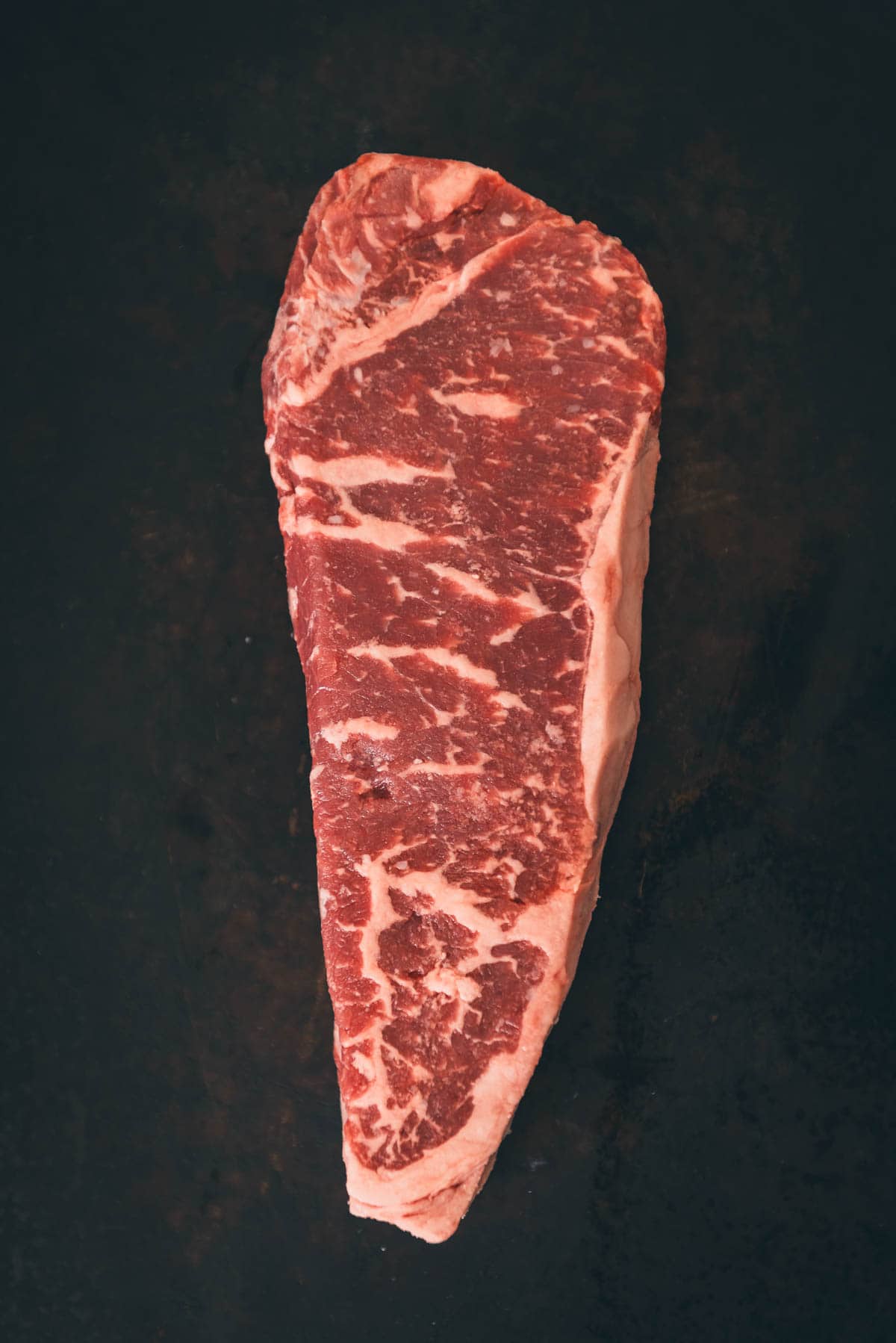
Marbling Grades
Ever wonder why some steaks cost more than others? It has a lot to do with the amount of marbling – those white streaks running through the meat. Marbling isn’t just for show. It’s basic beef quality. It affects how juicy, flavorful, and tender your steak will be. But how do you know how much marbling you’re getting? Here’s where the beef marbling score comes in.
This beef marbling scale is like a grading system for steaks based on the amount of visible marbling. The US uses the USDA system, which assigns meat grades like USDA Prime, Choice, and Select. These different grades of marbling consider factors like fat marbling, maturity, and firmness of the meat.
- Prime Beef: This beef receives the highest grades in marbling. It has the most marbling, resulting in super juicy, flavorful, and melt-in-your-mouth steaks. It’s also the most expensive unless you get into special breeds like wagyu beef. We reserve prime beef for special occasions, like prime rib at the holidays.
- Choice Beef: Don’t worry—you don’t need to spend a fortune on a good steak! USDA Choice grade has a good amount of marbling, offering a nice balance of flavor, tenderness, and price. Perfect for everyday grilling or pan-searing, it’s a crowd-pleasing option. This is the most common grade we look for.
- Select Beef: These have less marbling than Prime and Choice. They might not be quite as juicy or tender, but they can still be delicious, especially if you marinate or braise them. Select steaks are also a good option for those who prefer a leaner cut.
- Here’s the thing, though: Look at the meat you’re buying. We’ve had exceptional marbling in select-grade beef before. There’s always an exception to the rules.
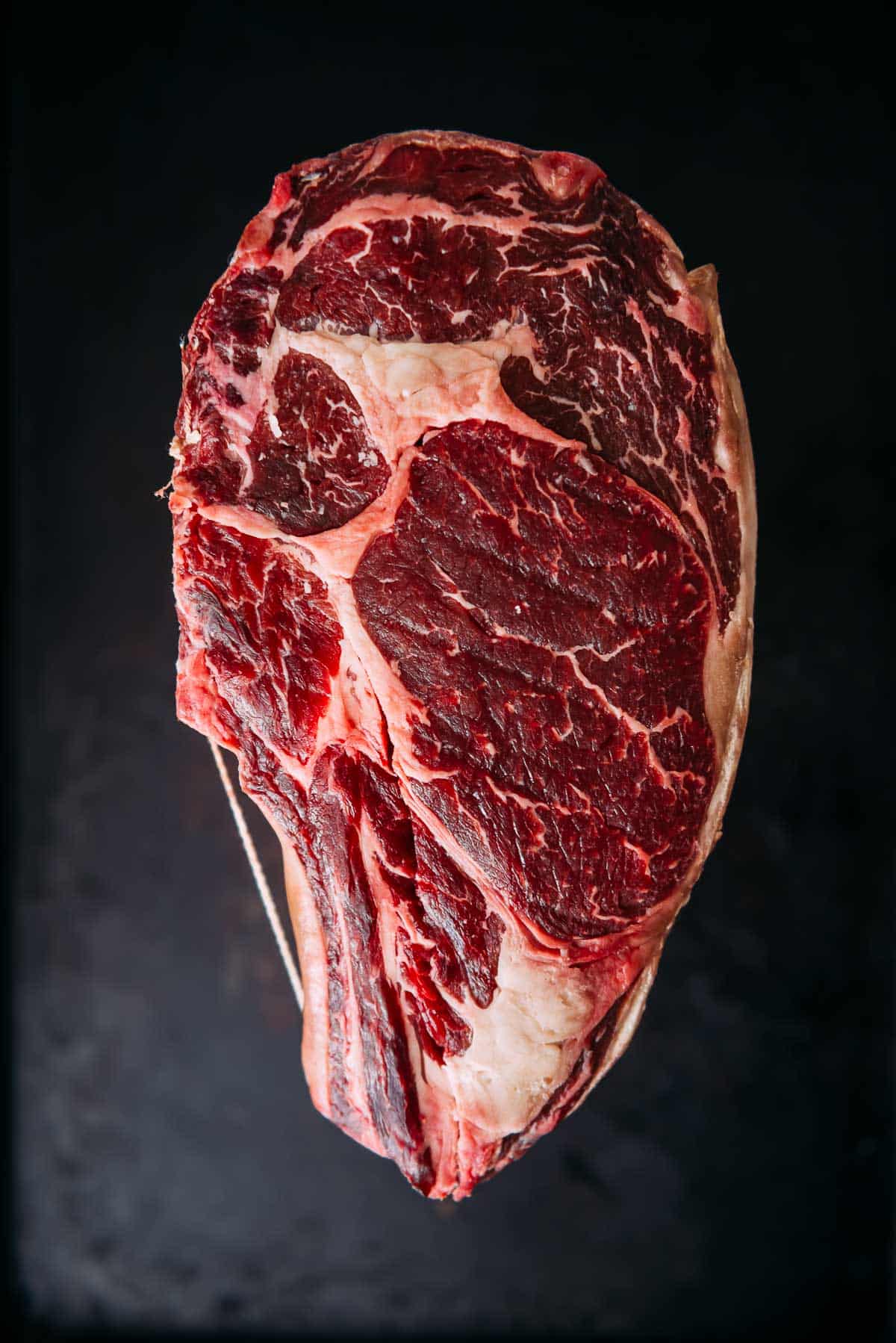
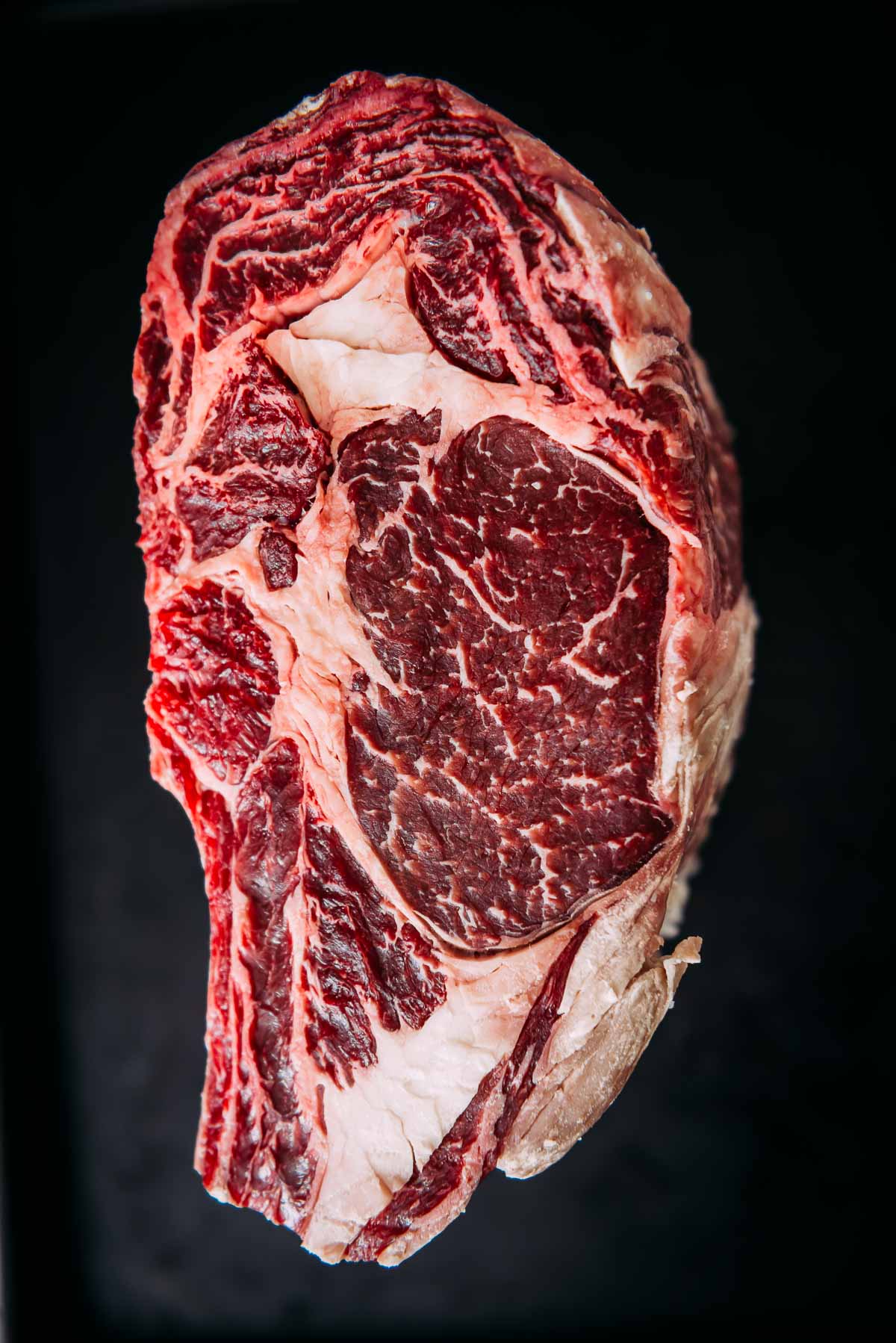
Marbling preference is personal. Some love the richness of a Prime steak, while others prefer the slightly leaner texture and subtler flavor of Choice. Check out our Prime vs. Choice guide for a more in-depth explanation. The important thing is to understand the different grades of beef so you can choose cuts that suit your taste and wallet.
It’s important to know that not all beef purveyors use the USDA standard for their beef grades. Porter Road, one of the places we order meat online, does not use this grading system. Visually looking at the meat for marbling is an easy skill to have for places like this.
Girl Carnivore pro tip
Butchers are there to help! Ask them for advice based on your marbling preference and cooking style. With your newfound knowledge, you can decode the marbling code and choose the perfect steak for your next grilling adventure!
Choosing the Right Cut for You
If you crave an incredibly flavorful and juicy steak with abundant marbling, a cut from a well-marbled breed like Wagyu or a feedlot-finished prime cut might be the perfect choice. On the other hand, if you prefer slightly leaner cuts of beef with a subtler flavor profile, a grass-fed or younger animal cut might be a better option.
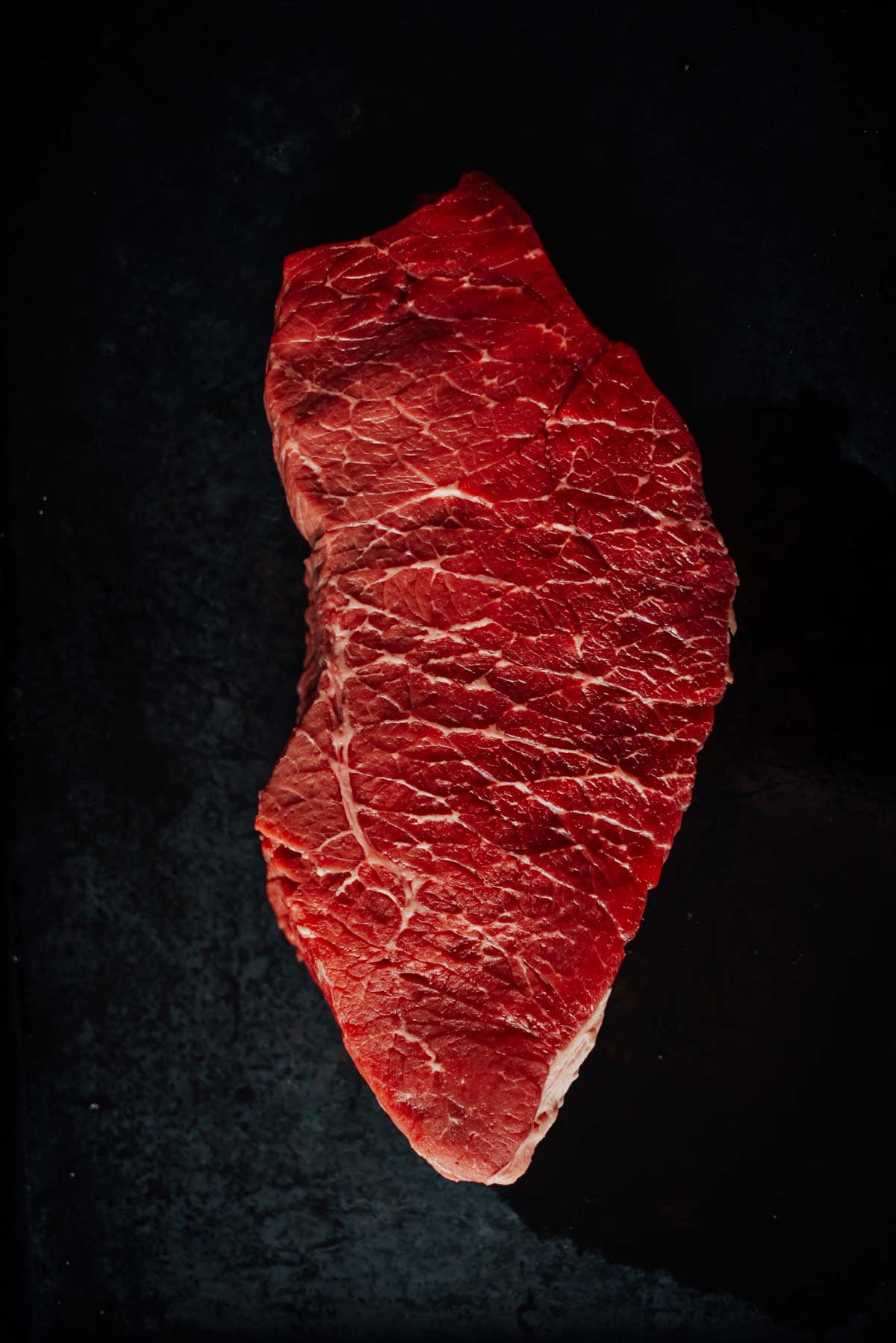
How to Pick a well Marbled Cut of Beef
Marbling is the secret weapon of a delicious steak, but how do you spot it when you’re at the butcher shop? Fear not, aspiring grill masters! Here’s a guide to identifying marbling, understanding the difference between marbling and plain old fat, and selecting the best cuts for a truly memorable steak experience:
Identifying Marbled Beef
- Visual Inspection: A good visual inspection is the most obvious way to identify marbling. Look for steaks with beautiful streaks of white running throughout the muscle fibers. These streaks are the intramuscular fat, the heart of marbling.
- Amount Matters: The amount of marbling is crucial. A well-marbled steak will have these white streaks evenly distributed throughout the meat, not just clustered in pockets. Avoid steaks with excessive marbling, which can be overwhelming in terms of richness.
- Don’t Confuse Marbling with Fat: It’s important to distinguish marbling from external fat. Marbling is the fat within the muscle itself, while fat trim is the excess fat on the outside of the cut. You want the marbling, but you can trim off the excess external fat.
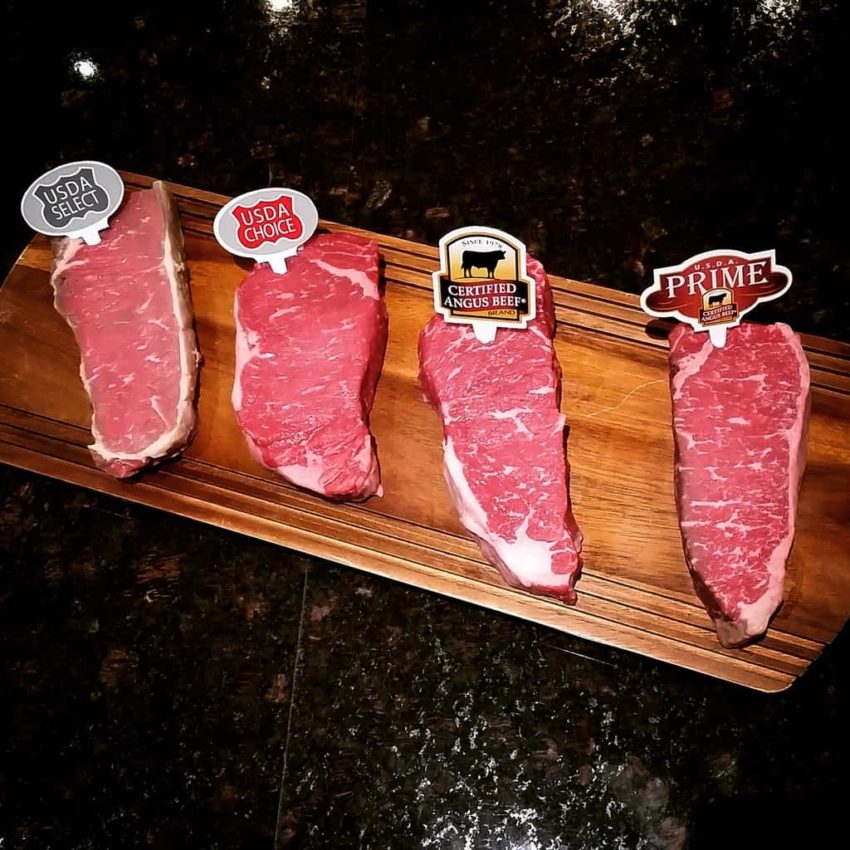
Marbling vs. Fat: Understanding the Difference
Marbling is not just any fat; it’s a specific type of intramuscular fat with unique properties:
- Flavor and Aroma: Marbling fat contains fatty acids that break down during cooking, releasing flavor and aroma compounds. Regular fat doesn’t have this same effect.
- Tenderness: As marbling fat melts, it tenderizes the muscle fibers, resulting in a melt-in-your-mouth texture. Regular fat doesn’t contribute to tenderness in the same way.
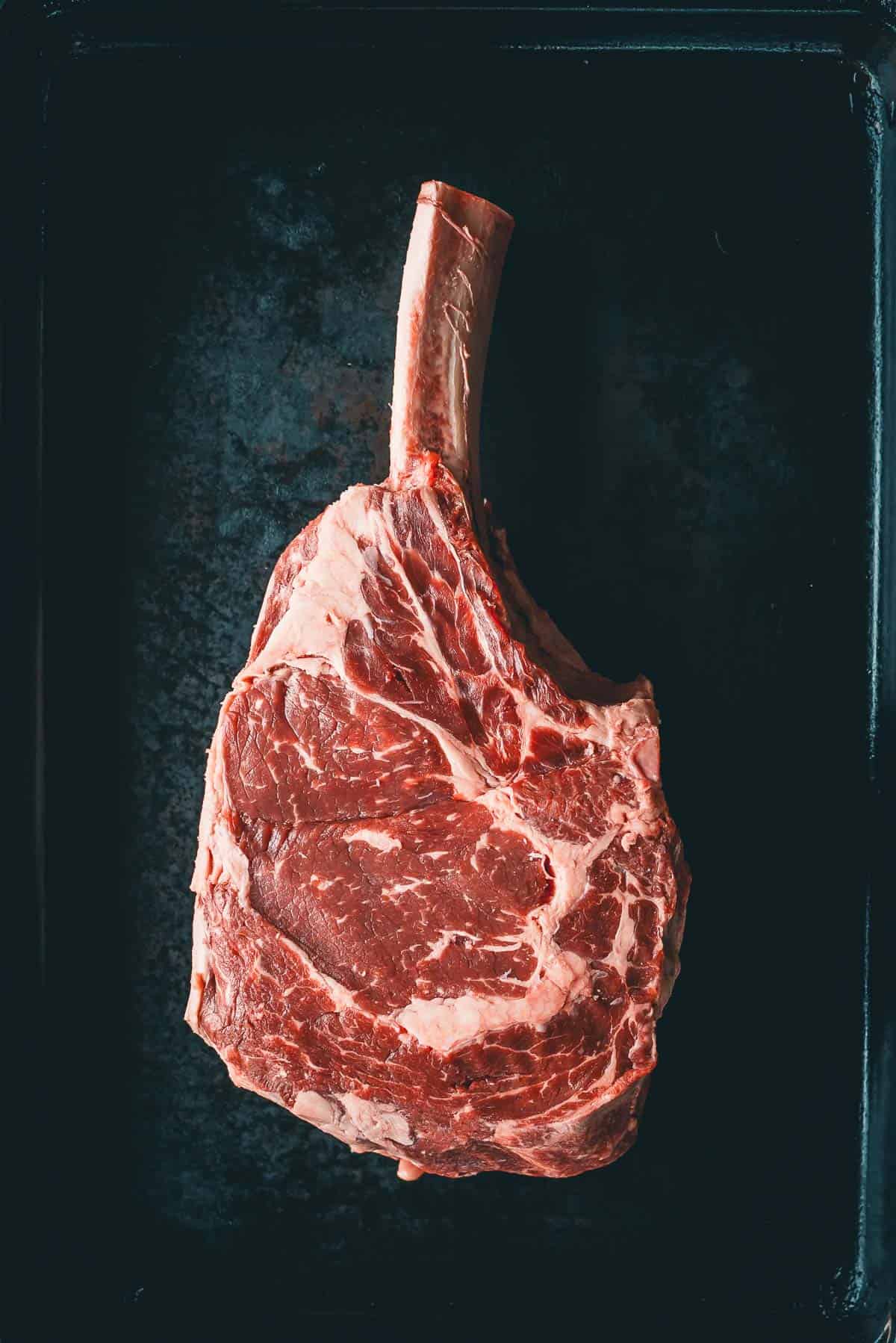
Top Cuts for Quality Marbling
Now that you know how to identify marbling, here are some cuts that are known for their exceptional marbling potential:
- Ribeye: This classic steak is practically synonymous with marbling. Ribeye comes from the rib section of the cow and boasts beautiful, abundant marbling, delivering incredible flavor and juiciness.
- New York Strip: Another prime candidate for marbling is the New York Strip. Located near the short loin, it offers a good balance of marbling, tenderness, and flavor, making it a versatile choice for grilling or pan-searing.
- Short Loin Cuts: Cuts like T-bone and Porterhouse come from the short loin and can have excellent marbling, resulting in incredibly tender and flavorful steaks. However, these cuts can also be quite expensive.
- Wagyu Beef: If you’re looking for the ultimate marbled experience, Wagyu beef from Japan is the king. Renowned for its higher fat content, Wagyu delivers an unparalleled level of flavor, juiciness, and tenderness.
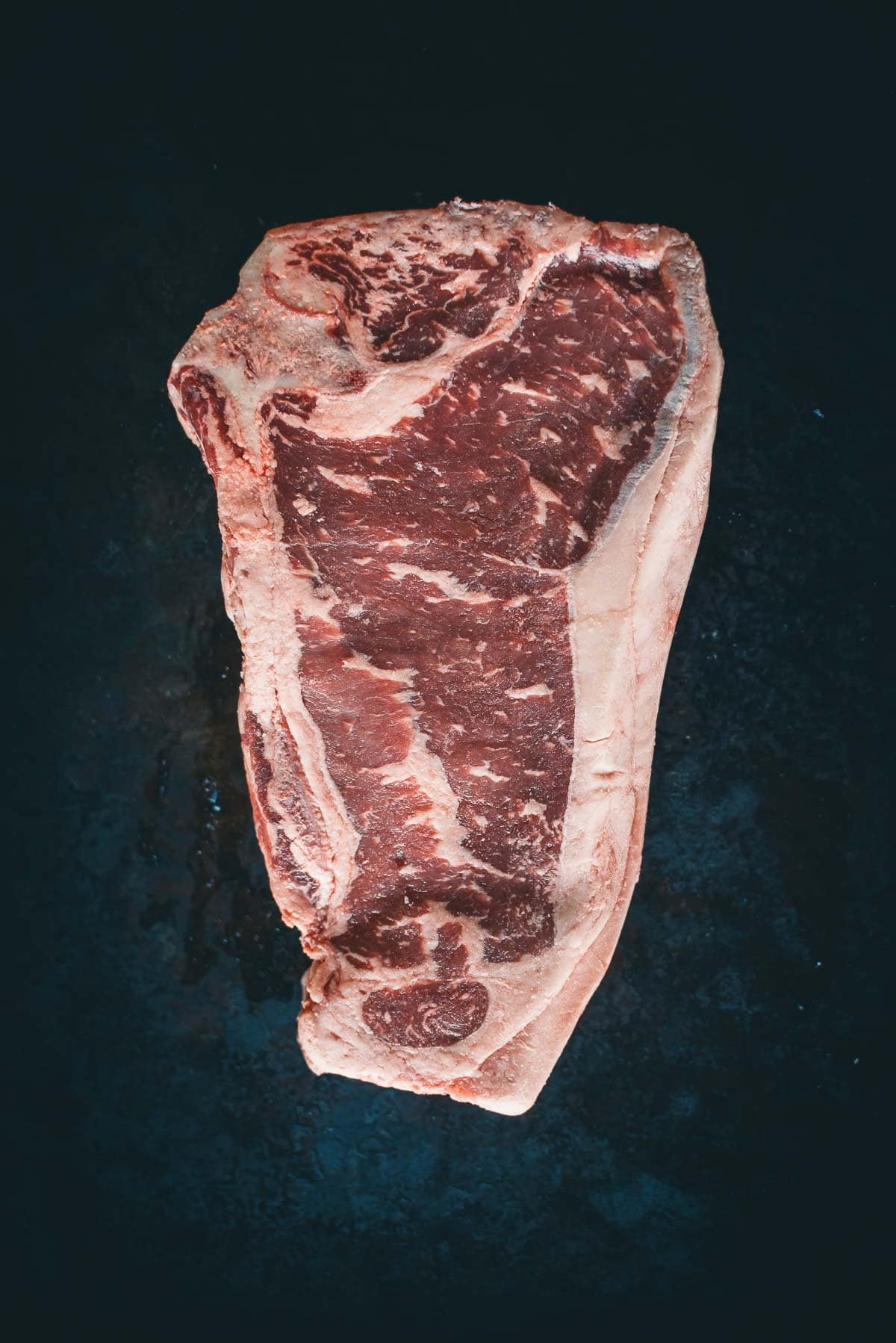
Factors That Influence Beef Marbling
Marbling isn’t a random act of bovine magic – different factors influence the amount and quality of marbling in your steak. Here’s a breakdown of the key players:
- Breed of Cattle: Genetics play a crucial role in marbling potential. Certain cattle breeds, like Japanese Wagyu Beef, are famous for their higher levels of marbling. Wagyu cattle are naturally predisposed to depositing more intramuscular fat, resulting in those beautiful, web-like marbling patterns. Angus is popular in North America for great marbling and has become a breed associated with a premium product. On the other hand, breeds bred for leanness, like some dairy breeds, will naturally have less marbling.
- Diet: Just like us, what a cow eats significantly impacts its marbling. Grass-fed cattle tend to have less marbling compared to their grain-finished. This is because grass is a leaner source of nutrition compared to the grain-based diets fed to cattle in feedlots. These grain-based diets are specifically designed to promote marbling development. However, it’s important to note that grass-fed beef can still be incredibly flavorful, offering more unique flavors than a standard grain finish.
- Age: Generally, as cattle age, they tend to develop more marbling. This is because younger animals prioritize muscle growth, while older animals tend to accumulate more fat, including intramuscular fat. However, there is a sweet spot. Cattle that are too old can have lower quality marbling, with the fat becoming firmer and less desirable.
- Exercise Level: Just like humans, more active cattle tend to have less marbling. This is because physical activity burns calories and reduces fat deposition. While this might not be a major factor for most commercially raised beef, it’s something to consider if you’re buying directly from a farm where the cattle have a lot of space to roam.
- Hormones and Antibiotics: Using hormones and antibiotics in cattle raising can also impact marbling. While the debate continues, some studies suggest that using growth hormones might lead to increased marbling. However, regulations and consumer preferences are leading to decreased use of these substances in many countries.
Cooking Tips for Marbled Beef
Here’s a breakdown of cooking techniques and preparation methods specifically designed to make the most of your marbled masterpiece:
- High-Heat Searing: Thin cuts of marbled beef thrives on high-heat cooking methods like grilling, pan-searing, or using a cast-iron skillet. The intense heat quickly sears the exterior, locking in the natural juices and creating a beautiful caramelized crust. This “Maillard reaction” creates those delicious browned flavors we all crave. Remember, the marbling itself adds richness, so you don’t need to add much extra fat during cooking.
- Reverse Sear: For a more even cook throughout the steak, especially for thicker cuts, consider the reverse sear method. This involves slowly bringing the internal temperature of the steak up in a low oven (around 250°F) before finishing it with a quick sear over high heat. This ensures a perfectly cooked center and a flavorful crust, maximizing both tenderness and juicy goodness.
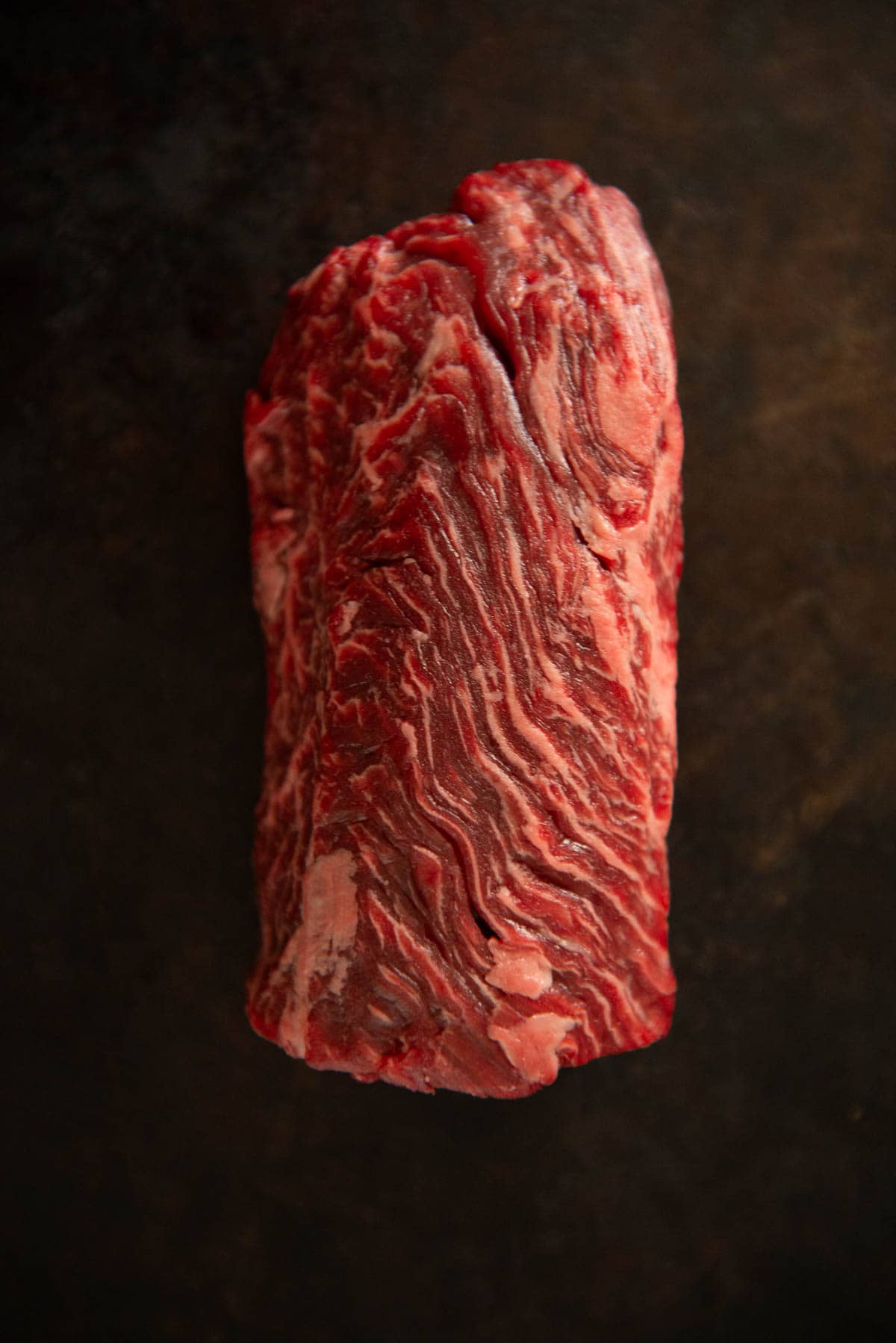
Preparation and Serving Tips
- Temperature is Key: When it comes to marbled beef, don’t overcook it! The intramuscular fat melts and tenderizes the meat as the temperature rises. Aim for medium-rare (around 130-135°F internal temperature) for the best balance of flavor and texture. Using a meat thermometer is your best friend here to ensure desired doneness. Overcooked marbled beef can lose its juiciness and become tough.
- Resting is Crucial: After cooking, allow your steak to rest for a few minutes before slicing against the grain. This allows the juices to redistribute throughout the meat, resulting in a more flavorful and juicy eating experience. It is like letting the steak “relax” and redistribute its deliciousness.
- Simple Seasoning: Marbled beef boasts a rich flavor on its own, so there’s no need to go overboard with seasonings. A simple rub with kosher salt and freshly cracked black pepper is often all you need. You can also experiment with herbs like rosemary or thyme for added complexity.
- Perfect Pairing: Marbled beef deserves a delicious accompaniment. To complement the richness of the meat, consider roasted vegetables, creamy mashed potatoes, or a light salad. A good glass of red wine can also enhance the overall dining experience.
Remember: When it comes to marbled beef, less is often more. Let the quality of the meat shine through with simple cooking techniques, proper temperature control, and a touch of creativity in your seasoning and sides.
girl carnivore pro tip
For a truly decadent experience, consider dry-aging beef. This process concentrates the flavor and creates an even more tender texture. While dry aging requires specific equipment and time, the results can be remarkable.
Marbling isn’t just a fancy term – it’s the key to unlocking a world of juicy, flavorful, and melt-in-your-mouth steaks. Next time you’re at the butcher shop, consider exploring the world of marbled beef.

